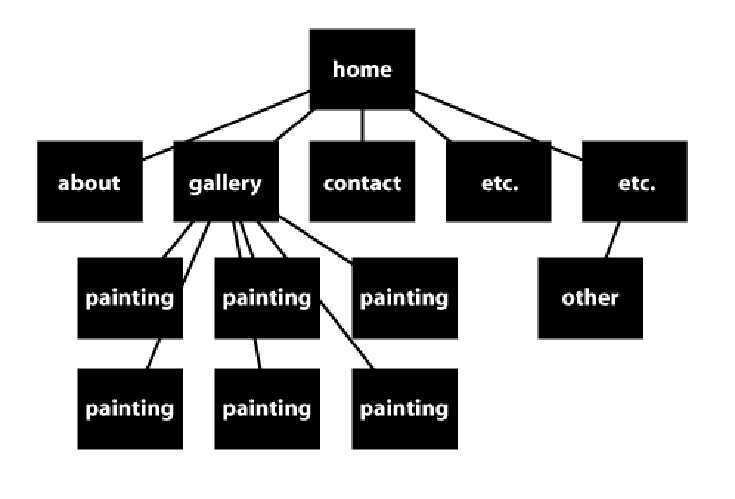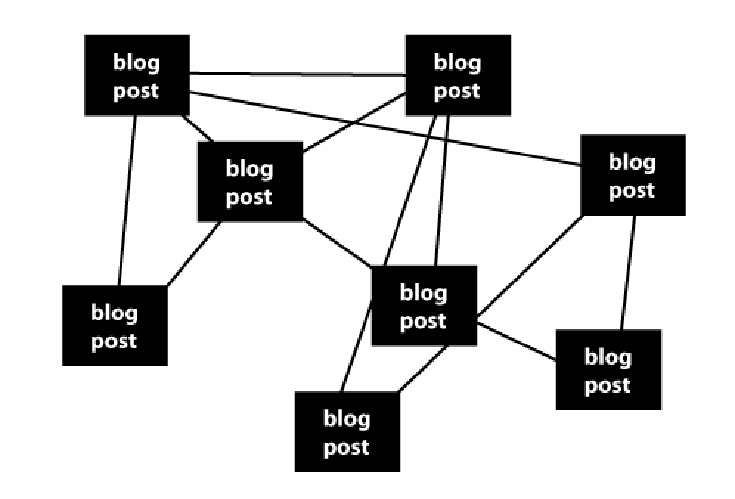Most of you art bloggers probably know by now that getting more inbound links from other art sites will directly affect your website’s rank in Google. What you may not know is that you have the power to improve your own rankings with your own links.
What do I mean? First take a look at the structure of a website, and then I’ll explain.
This is how a traditional portfolio website is set up, with several navigational links leading from the home page to sub-pages like the “about,” “gallery,” and “contact” pages. The gallery page then links to individual pages (often via thumbnail images), with each one displaying a single work of art.
Now here’s the structure of a basic art blog:
The home page is in the top left, with links to monthly archives as well as traditional sub-pages. The archive pages then link to individual posts, most of which will contain a single work of art and hopefully some good descriptive text for Google.
Whether you have an art blog or a portfolio site, one thing’s for sure—your home page is the “strongest” and most likely to rank the highest on Google when compared to other webpages out there that contain similar words and phrases.
You can easily see which pages of your website are most important by using a special search query in Google. Type site:http://www.website.com and replace “website” with the name of your site. (This works for blogger.com and wordpress.com blogs too, just make sure to include the full URL.)
Google will return a full list of all your pages, probably with the homepage first, then archives and sub-pages, then individual pages or posts. Of course, if some of your pages have been linked to by another art website they’ll rank higher up; which shows the importance of getting links from other art sites.
And of course the more high-ranking pages you have, the more people will find you.
But what if you can’t get any links? Well, the answer’s right in front of you—use all those pages that YOU control.
By linking to yourself from page to page within your own website, you can help your own pages rank higher in Google. It’s called deep linking, since you simply link deeper into your own site whenever applicable. Deep linking might look something like this:
(You should also link from your home page and other high-ranking pages.)
Deep linking isn’t a full substitute for inbound links from other websites, but it will certainly help. And as a bonus, as long as your links are relevant your website will be easier to navigate too.
This post may contain affiliate links.



